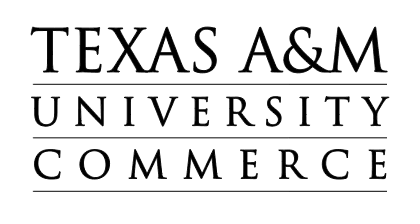Master of Arts
Application should be made to the Graduate School. The Graduate School maintains a rolling admission policy. The application must include a link to an electronic portfolio of 20 images. Preference is given to applications for assistantships which meet the February 1 deadline for Fall Admission, and November 1 deadline for Spring admission.
Transfer Credit
Graduate Faculty may accept a maximum of 12 semester hours for the M.A. or M.S. degrees or up to 1/3 of the credit required for a Master’s degree as transfer credit from another accredited graduate school. Transfer credit must be in art and will be granted only for those courses in which the student received a grade of “B" or better and for which evidence of work can be demonstrated in the form of a portfolio review. Students desiring to transfer courses toward their degree requirements must complete a Graduate Transfer Course Request Form, available in the department office. Students concurrently enrolled or enrolled at another institution during the final semester in a program can anticipate a one-semester delay in graduation. The combination of transferred credit and credit earned by extension may not exceed 12 semester hours or 1/3 of the credit required for the Master's degree.
Requirements
For any Master of Arts degree a minimum of 10 graduate courses and 30 semester hours is required for the M.A. degree.
- The Major. Six to ten graduate courses within the major department are required to constitute a major field of concentration.
- Electives. From two to four courses may be taken outside the major and four courses in one subject may be designated as a minor.
- Foreign Language. The language requirement demands completion of at least 12 semester hours in one foreign language. See the Graduate Catalog for policies regarding the admission of some high school language credit.
- Thesis. After submitting a thesis proposal, the candidate must conduct original research and write a thesis (six semester hours), reporting this research under the supervision of an advisory committee
- Final Examination. The candidate must pass a comprehensive examination administered by the advisory committee covering all the work within the Master's degree program, including an acceptable defense of the thesis, if applicable.
M.A. Advisory Committees in Studio Art
The student must choose a committee chair by the end of the first semester, and the complete committee chosen by mid-term of the second semester, or the student's work will not be reviewed.
The chairperson may be any full-time member of the graduate faculty in either art or photography, though it is advisable that the chairperson be an instructor in the student's area of concentration. At least one instructor in the student's major area must be included among the four members of the advisory committee.
Unless staffing changes require otherwise, a student will be allowed to make one change on the committee.
The M.A. advisory committee consists of a chairperson and two other members of the faculty, selected by the student from the full-time graduate faculty. The committee must be selected before the end of the student's first term. For that purpose a Committee Selection Form is available in the department office. This form must contain the names of the three committee members, together with their signatures. The chairperson plays an important role on the committee, for he/she is responsible for determining the final grades in studio courses. While every member of the faculty will recommend a grade for the student's studio courses on the Graduate Review Form (G.R.F.), the committee chairperson, as the instructor most familiar with the student's work, has the final decision in assigning a grade which reflects the consensus of the faculty.
Miscellaneous
Graduate students pursuing the M.A. and M.S. degrees in studio art are required to participate in the mid-term and final graduate reviews, as are the students en route to the M.F.A. degree. Students pursuing the M.S. in Applied Photography are exempt from this requirement.
The method used to evaluate the graduate reviews is the Graduate Review Form (G.R.F.), which the members of the faculty complete following the day of the reviews. The G.R.F. informs the student of progress or deficiencies in a clear, objective and useful manner as measured against the standards and criteria of graduate study at A & M Commerce. The graduate coordinator collects the G.R.F. forms and the student's primary advisor takes into consideration this data while assigning the grade. The G.R.F. forms are then copied and returned to the student by the department office and become a permanent part of the student's file.
Credit earned over six years prior to graduation will require specific written department justification and approval by the Dean for Graduate Studies and Research in order to be counted towards a Master's degree. In no case may courses more than ten years old be counted towards a Master's degree.
With the approval prior to enrollment of the Dean for Graduate Studies and Research, the Department of Art, and the instructor(s) of the course(s) in question, up to two undergraduate courses at the 300 or 400-level may be counted towards a Master's degree. In such cases a student will be expected to complete additional work beyond the normal course requirements at a level commensurate with graduate instruction.













